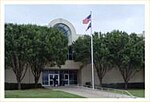KKDA (AM)
Asian-American culture in the Dallas–Fort Worth metroplexFull service radio stations in the United StatesKorean-language radio stations in the United StatesNon-English-language radio stations in TexasRadio stations established in 1957 ... and 1 more
Radio stations in the Dallas–Fort Worth metroplex
KKDA (730 AM) is an American radio station in the Dallas/Fort Worth area. The station is licensed to serve the community of Grand Prairie, Texas, and is owned by Scott Kim and Kimberly Roberts, through licensee SKR Partners LLC. On January 1, 2013, SKR Partners began operating the station under a local marketing agreement while the sale awaits FCC approval. Previously, KKDA was operated for many years by Service Broadcasting as a long-time urban oldies format. In addition, it carried UTA Mavericks men's basketball games beginning with the 2012–13 season.730 AM is a Canadian and Mexican clear-channel frequency.
Excerpt from the Wikipedia article KKDA (AM) (License: CC BY-SA 3.0, Authors).KKDA (AM)
Lone Star Trail, Grand Prairie
Geographical coordinates (GPS) Address Nearby Places Show on map
Geographical coordinates (GPS)
| Latitude | Longitude |
|---|---|
| N 32.764166666667 ° | E -96.990833333333 ° |
Address
KKDA-AM (Grand Prairie)
Lone Star Trail
75060 Grand Prairie
Texas, United States
Open on Google Maps




